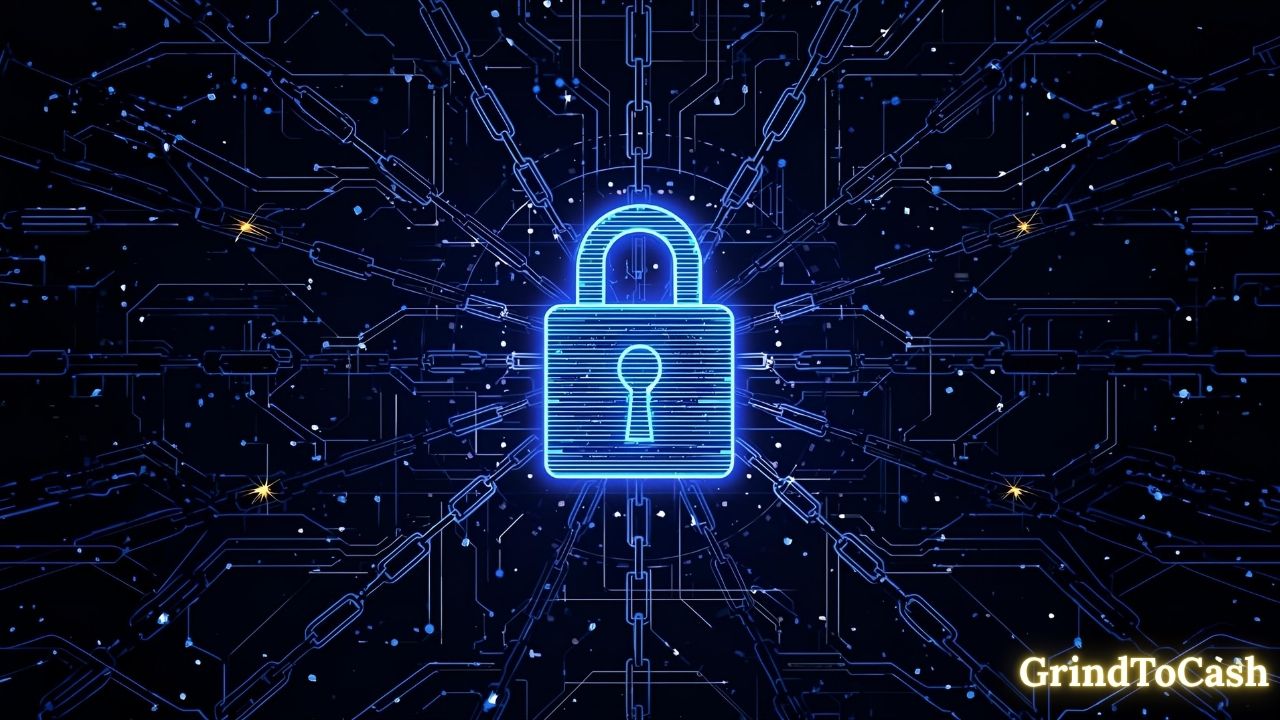2025’s Most Promising Crypto Niches for Global Investors
A clear, practical guide to the crypto niches that will likely attract the most investors in 2025 — simple, evidence-based, and ready for GrindToCash readers.
By Yaser | Published on October 5, 2025

Layer-2 Scaling & Rollups
Layer-2 solutions — especially optimistic and zero-knowledge rollups — aim to solve blockchain congestion and high fees. As transaction demand grows, layers that move work off mainnets while keeping security strong become essential. Investors favor projects that demonstrate real user growth, low fees, and strong developer activity. Moreover, adoption by wallets and exchanges increases on-chain liquidity and token utility, which in turn can attract institutional capital. Therefore, layer-2 remains a top niche to watch in 2025 because it directly improves usability and cost for millions of users.
Why layer-2 matters now
Layer-2 reduces gas costs and speeds up transactions, so dApps become usable at scale. As more people use DeFi, NFTs, and games, mainnets like Ethereum need scaling. Rollups keep security anchored to the main chain while handling high throughput off-chain. Consequently, layer-2 projects that integrate easily with wallets and bridges get faster adoption. For investors, practical adoption and measurable transaction growth matter more than hype.
Leading rollups and indicators to watch
Track metrics like daily transactions, active addresses, TVL routed through the rollup, and developer commits. Projects with strong partnerships (wallets, bridges, major dApps) show product-market fit. Also watch tokenomics that reward long-term participation and staking — these can support token value if usage grows steadily.
Risks and how to evaluate them
Be cautious about centralization, bridge security, and economic design. If a rollup relies on a small operator set, its decentralization risk rises. Also evaluate bridge audits and bug-bounty programs. Finally, check whether migration paths for users are smooth — ease of onboarding matters for sustained growth.

AI + Web3 Tokens (AI infrastructure & data tokens)
AI and blockchain are converging. Web3 provides data provenance, tokenized incentives for labeling, and decentralized compute marketplaces. Tokens that power AI infrastructure, data marketplaces, or model-staking systems can grow as demand for trusted, auditable AI rises. Furthermore, projects that enable secure data sharing and verifiable model performance will attract enterprises and researchers. For investors, this niche is attractive because it combines two high-growth themes: AI adoption and decentralized incentives.
Core use cases and why they matter
Use cases include tokenized data marketplaces, compute marketplaces for model training, and verifiable audit trails for model outputs. These tools help AI teams access diverse, high-quality datasets while rewarding contributors. In turn, this builds network effects: more data attracts better models, which draws more users and partners.
Projects and metrics to follow
Watch metrics such as dataset volume, number of models deployed, fees captured by the network, and enterprise partnerships. A healthy developer ecosystem, credible research collaborations, and real revenue streams signal tangible progress beyond speculative token hype.
Valuation drivers and red flags
Value often depends on real usage and recurring fees, not only token speculation. Beware projects with unclear demand or immature governance. Also be careful where data privacy laws or proprietary data restrictions limit adoption — regulatory friction can slow growth.

DeFi Primitives & Yield Aggregators
DeFi primitives (AMMs, lending protocols, decentralized exchanges) remain the backbone of Web3 finance. Yield aggregators and composable primitives that deliver sustainable returns attract investors seeking yield. Moreover, protocols that improve capital efficiency, reduce impermanent loss, or provide audit-grade risk controls will outperform. As a result, savvy investors will focus on TVL quality, protocol revenue, and token utility rather than raw TVL numbers.
Why primitives matter for investors
DeFi primitives enable permissionless financial services and composability across the ecosystem. When a protocol consistently generates fees or improves capital efficiency, it can sustain token value through utility or buyback mechanisms. Investors prefer primitives with clear economic models and strong security histories.
Metrics that show real DeFi health
Follow protocol revenue, active users, adjusted TVL (quality of assets), and audit records. Also check how protocols distribute fees — sustainable fee capture that accrues value to token holders is a positive sign for long-term investors.
Risks and mitigation strategies
Smart contract risk, oracle manipulation, and liquidity exhaustion are major concerns. Diversify exposure across audited protocols and prefer teams with robust audits and active bug-bounty programs. Use small allocations to new primitives until they prove resilience under stress.

GameFi & Play-to-Earn Gaming
GameFi is evolving from speculative token drops to deeper play-to-earn economies with real user retention. In 2025, top projects will combine enjoyable gameplay, strong token sinks, and interoperable assets. Investors should favor games with clear monetization paths for players and sustained community growth. Importantly, partnerships with game studios and mainstream platforms often accelerate adoption and token demand.
How GameFi attracts long-term players and investors
Games that reward skill and time — rather than pure speculation — keep players and build markets for in-game assets. Token sinks (cosmetic, utility, or governance) help maintain value. Furthermore, cross-platform support and easy onboarding reduce friction for mainstream users, making these games attractive to both players and investors.
Key indicators of promising titles
Track daily active users, retention rates, marketplace liquidity for in-game NFTs, and partnerships with gaming publishers. High retention and steady marketplace volume indicate real demand for tokens and assets, which supports sustainable token economics.
Common pitfalls in gaming investments
Many early GameFi projects failed due to weak gameplay, poor token sinks, or unsustainable rewards. Avoid projects where token issuance outpaces genuine demand. Also consider the team’s gaming pedigree — experienced game developers are more likely to ship engaging products.

Green Crypto & Energy-Efficient Chains
Sustainability is increasingly important to investors and regulators. Chains that use proof-of-stake, carbon-offset programs, or low-energy consensus methods attract both retail and institutional interest. Projects that transparently report emissions and fund green initiatives can access ESG-focused capital. Therefore, green crypto is not only ethical but also a growing investment theme for 2025.
Why sustainability affects investor demand
Institutions and large funds increasingly apply ESG screens to crypto allocations. Energy-efficient chains reduce regulatory risk and negative press. As a result, green projects can lower adoption friction and open new liquidity sources, including ESG-focused funds and corporate treasuries.
What to measure in green projects
Look for transparent energy reporting, third-party verification of offsets, and commitments to renewable energy. Also track partnerships with sustainability organizations and whether the network incentivizes eco-friendly behaviors among validators and developers.
Risks and regulatory considerations
Greenwashing is a real risk: claims must be verifiable. Regulatory shifts or changing carbon accounting rules can affect project economics. Investors should demand clear, third-party audited reports before increasing exposure.

Privacy Tech & Zero-Knowledge (zk) Tools
Privacy and zk-tech are becoming more mainstream as developers build scalable, private computations and proofs. Zero-knowledge proofs enable private transactions, scalable rollups, and confidential smart contracts. Investors who back projects offering practical privacy features plus compliance tools may find strong upside, especially as privacy demand increases across finance and enterprise use cases.
Practical use cases beyond anonymity
Privacy tech helps in confidential finance, private auctions, and secure identity verification. Zero-knowledge proofs let applications prove computations without revealing underlying data. This has strong value for regulated industries that need privacy with auditability.
Adoption signals and project strengths
Look for real integrations with DeFi, enterprise pilots, and tooling that eases developer adoption. Projects with modular zk toolkits and strong cryptography teams are more likely to deliver production-grade solutions.
Regulatory and tech risks
Privacy tech faces scrutiny from regulators worried about illicit uses. Projects that build compliance features (selective disclosure, auditing APIs) reduce regulatory risk. Evaluate cryptographic proofs and the team’s track record to avoid immature implementations.

Tokenized Real-World Assets (RWA)
Tokenization of assets — real estate, bonds, invoices, and commodities — brings traditional value into the crypto rails. RWAs can deliver predictable yields and open illiquid markets to global investors. In 2025, regulated tokenization platforms that combine legal clarity, custodial transparency, and on-chain settlement will draw significant capital.
Why RWAs are a bridge to institutional money
Tokenized assets offer familiar cash flows and compliance structures, making them attractive to conservative investors. By combining legal frameworks with blockchain settlement, tokenization reduces settlement time and increases market access. Hence, RWAs can materially broaden crypto’s investor base.
Examples and metrics that matter
Key examples include tokenized real estate shares, short-term commercial paper, and tokenized bond issuances. Important metrics are real asset backing, legal structure clarity, custody arrangements, and on-chain liquidity. Strong regulatory alignment is a major positive.
Legal, custody, and operational risks
Tokenized assets require clear legal wrappers and trusted custodians. If custody or legal enforceability is weak, token value is compromised. Investors should insist on audited custodial setups and transparent redemption/redemption processes.

Interoperability, Bridges & Oracles (Core Infrastructure)
Interoperability and reliable oracles are the plumbing of Web3. As multi-chain ecosystems expand, projects that securely move assets and data between chains become indispensable. Reliable oracles that deliver real-world data on-chain also power DeFi, derivatives, and insurance. Infrastructure projects that prioritize security and decentralization will attract long-term investor interest.
Why infrastructure tokens attract patient capital
Infrastructure projects often earn fees and capture value from many applications. Because they are essential services, they can generate stable usage over time. Investors who back well-audited, decentralized infrastructure that developers trust may benefit from recurring revenue and network effects.
What to monitor in bridges and oracles
Examine security history, decentralization of validators/oracle providers, and economic design for fee capture. Also watch developer adoption and API stability. Projects with strong insurance funds or multi-party validation reduce systemic risk.
Security patterns and evaluation checklist
Always check whether bridges use multi-sig, fraud proofs, or zk proofs. For oracles, prefer networks with multiple data sources, reputation systems, and verifiable off-chain aggregation. A single exploit on infrastructure causes broad contagion, so security maturity is paramount.








